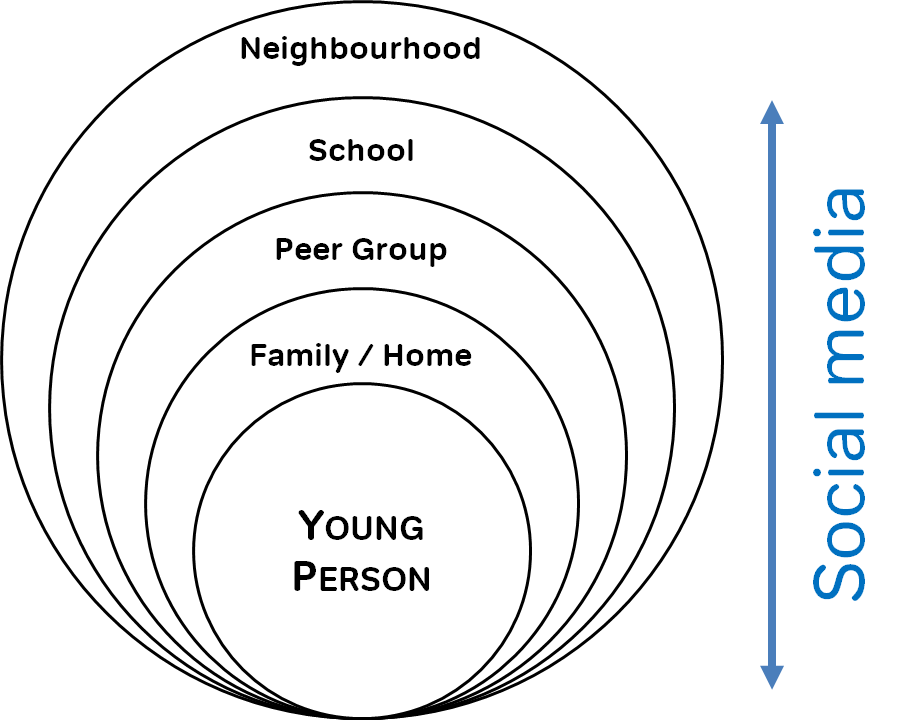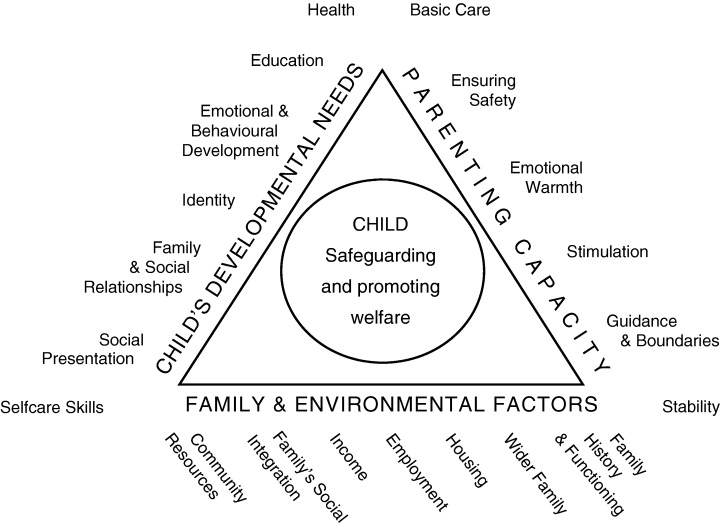Children and young people attending education settings cannot be seen as islands. They are part of a much wider network of peers, neighbourhoods and other influences. When we consider some of the issues affecting our children and young people, it’s important that we understand these influences. We also need to consider not only the physical, real-world influences, but the wider groupings found within social media and the important messages they impart.
Contextual safeguarding in more depth
Historically known by social workers as systems theory, contextual safeguarding has come to the fore more recently in relation to child-on-child abuse, leading to the acceptance of a greater need for understanding about the lives and experiences of children and young people. At Safeguarding Network we argue that, in line with the views of Keeping Children Safe in Education, contextual safeguarding relates to every child or young person, not just those experiencing specific types of abuse.
As we grow and develop, humans first recognise that we are autonomous individuals, before moving on to recognise that there are others around us whom we must interact with. This then develops into a recognition that we need to share resources to get the things that we want and the support that we need. However, as our network broadens when we get older, so does the sphere of influence.
Starting from birth, children and young people are exposed to the influences of people around them. Initially, this is their primary care givers along with a small circle of family and trusted friends. Over time, this then includes other children’s parents, temporary caregivers (e.g. nursery practitioners, babysitters, etc.), followed by teachers and friends. Around the time that most children are leaving primary school and starting their secondary education, this sphere widens again because they have less restricted access to the internet through mobile technology (with varying degrees of oversight). This cuts across traditional barriers that used to be dictated by who you were and where you lived.

As the diagram shows, contextual safeguarding is about considering an individual or cohort of children and identifying who may be influencing them and the degree of that influence.
How can this help our setting?
Each setting has cohorts of children or young people, for example classes, year groups and key stages. Understanding the pattern of what is happening in each of these cohorts can be beneficial, and you can tailor your PHSE curriculum to address current issues, making your safeguarding approach responsive. This cohort-based knowledge will also mean that you can identify what influences there may be on individual children and young people as the need arises.
For example:
If we consider an average primary school with at least one class per year from Reception to Year 6, the needs of the children in each class are going to be very different by virtue of their age and stage of development. By the end of the first term, the class teachers are likely to be aware of pieces of information which are solely relevant to their class, as well as having noticed things which are not necessarily serious enough to warrant follow-up on an individual basis but may benefit from a whole class approach. If this is then also combined with an analysis of notes made when there are concerns, further areas or themes may be identified, for example:
- Pupils messaging each other throughout the night on mobiles and tablets.
- A year group having a specific issue around racist incidents.
- One group of children having a greater number of parents in prison.
- A specific cohort having a high number of domestic abuse incidents.
Local knowledge can also be particularly important – for example, what is the gang culture within your setting’s catchment area? What are the levels of deprivation within the catchment area?
The internet
As demonstrated in the above image, social media and the internet can cut across any traditional boundaries that may have been in place. As we regularly see in the news, individuals and corporations can harness this power to influence many different people at the same time. We can no longer separate children and young people having an online and an offline world because the two are inextricably linked as one. Staff are likely to hear about things that children and young people see or hear online and how this is influencing them – again this may not be enough to warrant intervention on an individual level but may benefit from whole class input.
Influence on individuals

Such information may also then be particularly relevant when children and young people are missing education, at risk of exploitation or victims of child-on-child abuse. It is not, however, limited to these situations. Social workers will often default to the Assessment Framework (shown here) when assessing the needs of children and their families. Information gathered through contextual safeguarding is often relevant to the “Family & Environmental Factors” domain at the bottom of the triangle.
It’s also important to recognise that it’s not just about the negative impacts – networks and influences can also identify where there are positives that can benefit the child and young person. We have information about tools that you can use with young people, such as genograms and ecomaps, to help establish what their networks are.
References
Firmin, C. 2013. Something Old or Something New: Do Pre-Existing Conceptualisations of Abuse Enable a Sufficient Response to Abuse in Young People’s Relationships and Peer Groups? In M. Melrose, & J. Pearce, Critical Perspectives on Child Sexual Exploitation and Related Trafficking (pp. 38-51). Hampshire: Palgrave Macmillan.


